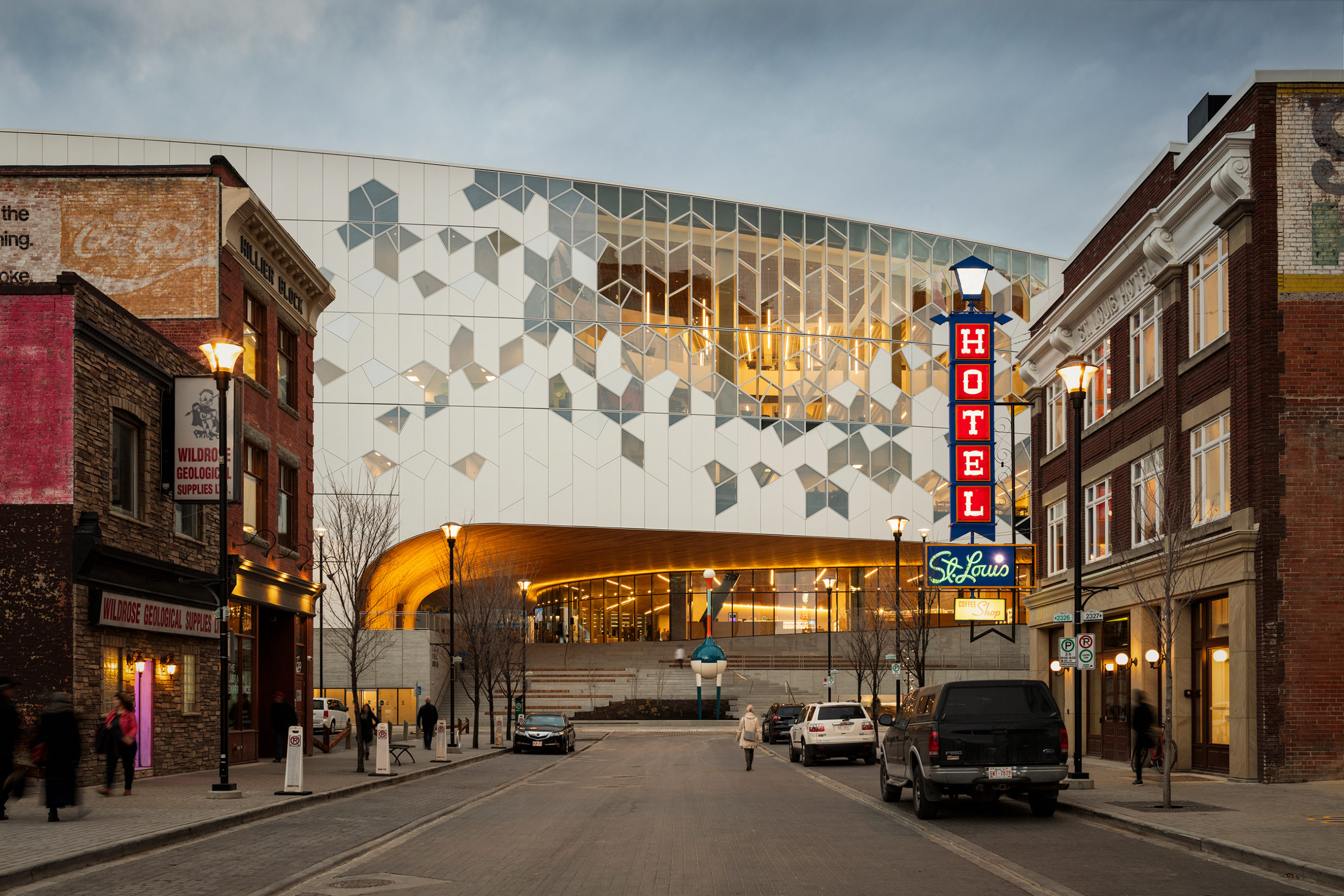Calgary Central Library


Early design precedent for arts and culture comes from the Greeks and their concept of enlightenment. Synonymous with higher thinking, enlightenment was associated with physical elevation. “Climbing the stairs towards these institutions is the literal translation of the ascension to enlightenment,” explains architect Robert Claiborne. “That’s why the Greek Parthenon is on a hilltop overlooking Athens, and why you see institutions later in history—like the Lincoln Center in New York—built on pedestals.”
But now, in the age of the Internet, arts and culture institutions no longer play the role of the informer. Instead, they exist to enrich our communities. “We’re turning these institutions inside-out and building them at street-level so everyone can be exposed to what’s happening inside.” says intern architect Michael Corpuz. “The buildings we design now are multifaceted, and able to host an array of activities. Not only are these institutions more visually connected to the community, they’re deeply entrenched in serving the community. They exist because the community exists.”
Another factor influencing the evolution of design is the newfound diversity amongst the designers of these buildings. “An architectural education used to be very exclusive,” explains Corpuz. “There weren’t as many colleges and universities in general, and the ones that did exist had very small cohorts. In addition to this, for a long time, education as a whole was only available to the privileged. When educational institutions began opening their doors to all genders and races, it allowed more diversity in architecture programs, which brought more enriched and more inclusive perspectives to the design process.”

“All institutions understand they have an aging participation,” says Claiborne, who goes on to explain, “It’s no secret that arts and culture institutions need to attract new audiences if they want to thrive in the 21st century.”
Fighting to entertain a generation obsessed with shareworthy and newer experiences, institutions are focusing on programming to attract people through their doors. The Natural History Museum in London, for example, hosts yoga, murder mysteries, movies, and nights at the museum. And the new Central Library in Calgary hosts free dance lessons, code clubs, architecture tours, and skills workshops.
While institutions reinvent themselves through programming, their facilities are being reinvented to accommodate new needs. “These spaces have become democratic,” says Claiborne. “We’re not designing institutional buildings anymore; we’re designing urban gathering spaces.”